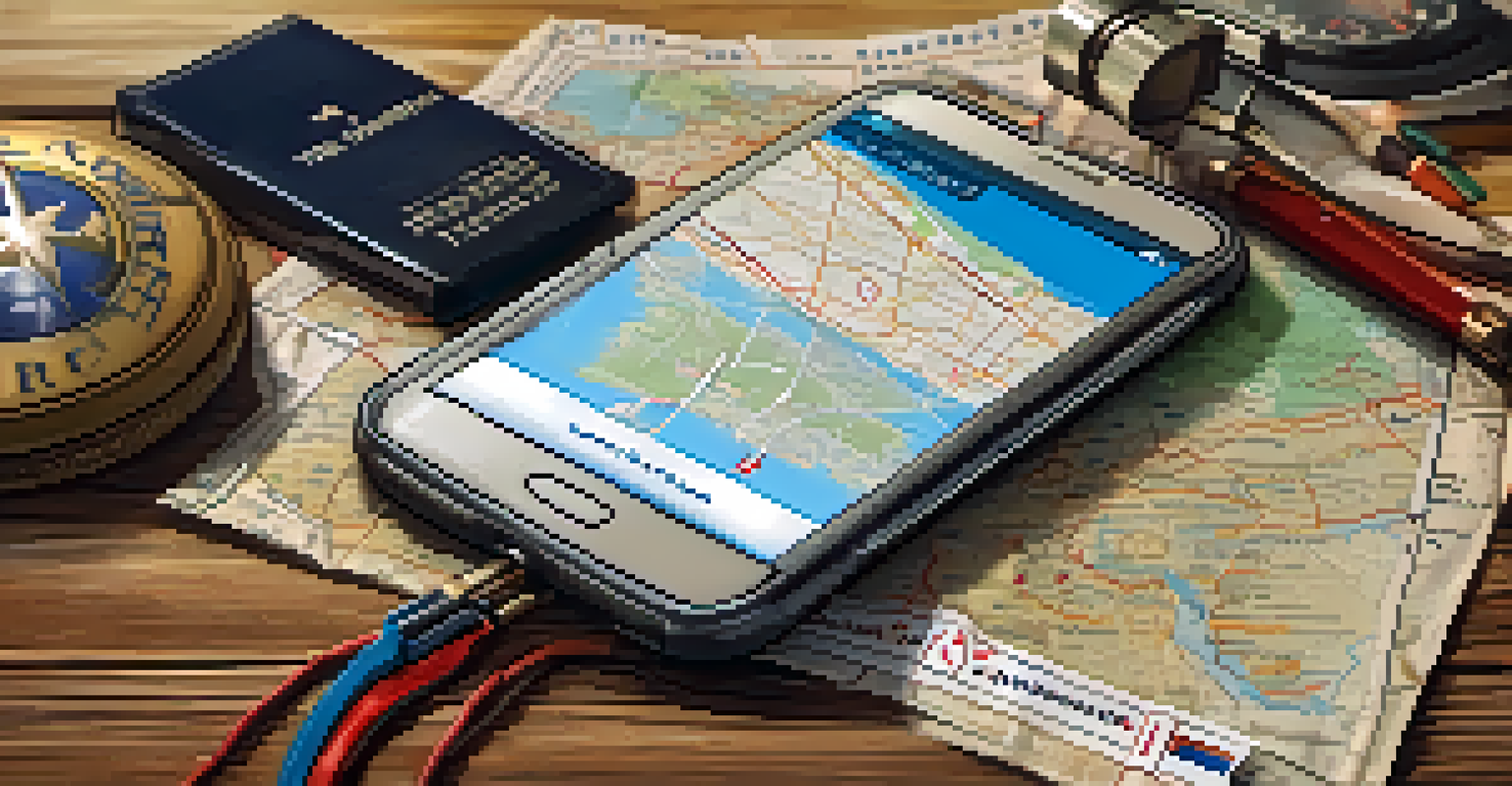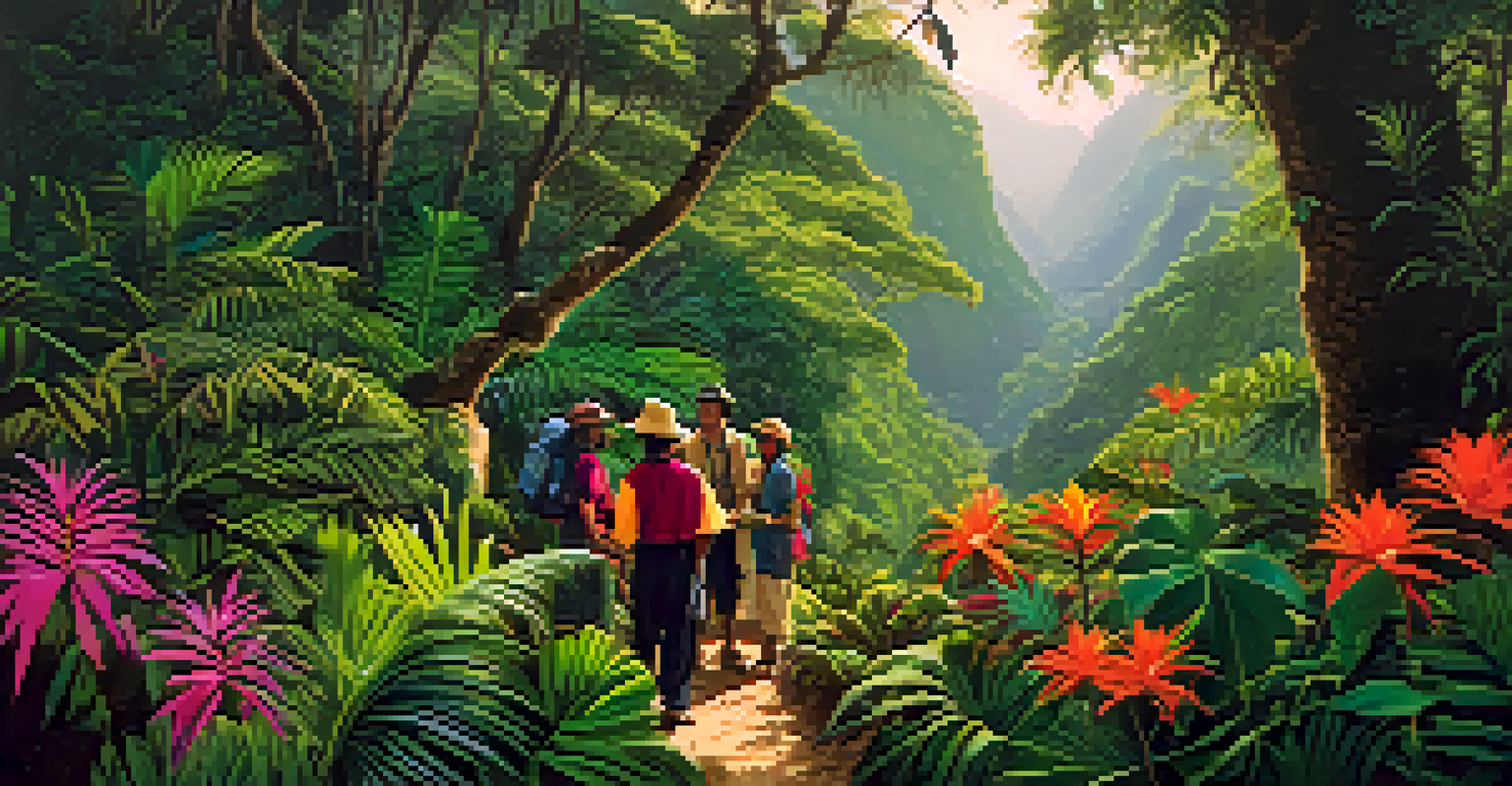Emergency Contacts You Need for Adventure Travel in Peru

Local Emergency Services: Know Who to Call
In Peru, it's crucial to have the local emergency numbers at your fingertips. The main emergency number is 105 for police, 116 for fire, and 117 for medical assistance. These numbers are toll-free and can be dialed from any phone, making it easy to reach help when needed.
In the midst of chaos, there is also opportunity.
Knowing the correct emergency numbers can save precious time during a crisis. For example, if you find yourself in an unfortunate situation like an accident while hiking, knowing to dial 117 can quickly get you medical attention. This simple step can make a world of difference in your safety.
Keep these numbers handy in case of emergencies, and consider saving them in your phone for quick access. Also, ensure that your travel companions know these numbers, as teamwork during an emergency can be invaluable.
Create a List of Important Contacts
Before embarking on your adventure travel in Peru, it’s wise to compile a list of important contacts. This should include your country's embassy or consulate, local hospitals, and your accommodation's contact details. Having this information organized can ease your mind while exploring.

For instance, if you lose your passport or face any legal issues, knowing how to reach your embassy can be a lifesaver. Similarly, having the contact information for nearby hospitals ensures you can quickly access medical care if necessary.
Know Emergency Numbers
Having local emergency numbers saved can save valuable time during a crisis.
Make sure to keep this list both physically in your wallet and digitally on your phone. This way, you’re prepared no matter what situation arises.
Local Tour Guides: Your Safety Allies
Hiring a local tour guide is not just a way to enrich your experience; it’s also a crucial safety measure. They know the terrain, understand local customs, and can navigate any potential dangers. This knowledge can be especially beneficial in remote areas.
Safety is not a gadget but a state of mind.
For example, if you're trekking in the Andes, a local guide can help you avoid hazardous paths and ensure you're well-prepared for altitude changes. Their expertise can prevent mishaps that may arise from unfamiliarity with the region.
Always verify the credentials of your guide, and don't hesitate to ask about their safety protocols. A reliable guide is your best partner in ensuring a safe and enjoyable adventure.
Emergency Contacts for Your Travel Insurance
Travel insurance is essential for any adventure traveler, and having key contacts for your insurance provider is a must. Make sure you have your policy number and emergency contact information readily available. This can streamline the process if you need to file a claim or seek assistance.
For instance, if you encounter a medical emergency during your trip, knowing how to contact your insurance company can facilitate immediate support. Many insurance providers have 24-hour hotlines specifically for emergencies, so keep that number on hand.
Share Your Itinerary
Sharing your travel plans with trusted contacts increases safety and accountability.
Additionally, familiarize yourself with the claims process and what is covered under your policy. Understanding these details ahead of time can save you stress when you need it most.
Local Hospitals and Medical Facilities
Familiarizing yourself with local hospitals and medical facilities is crucial for any adventure traveler. Research the nearest hospitals to your accommodations and any areas you plan to visit. This knowledge can be invaluable in case of a medical emergency.
For example, if you experience altitude sickness while visiting Cusco, knowing the location of a nearby hospital can expedite treatment. Some larger towns may also have clinics specifically catering to tourists, offering services in English.
Take the time to check reviews or ask fellow travelers for recommendations on reliable medical facilities. This can give you peace of mind knowing where to go should the need arise.
Stay Connected: Mobile and Internet Services
Staying connected while traveling in Peru is vital for your safety. Ensure you have a local SIM card or an international plan that allows you to make calls and access the internet. This connectivity can be a lifeline in emergencies.
For instance, being able to access maps, contact local services, or reach out to friends and family can provide reassurance during your travels. Plus, having a charged phone can help you navigate unexpected situations more smoothly.
Stay Connected While Traveling
Access to mobile services ensures you can reach help and stay informed during your adventures.
Research the best mobile providers for coverage in the areas you plan to visit. A little preparation goes a long way in ensuring you remain connected, no matter where your adventure takes you.
Stay Informed About Local Conditions
Keeping updated on local conditions is vital for your safety while traveling in Peru. Weather patterns, political climates, or even local events can affect your travel plans. It’s important to check reliable news sources or local advisories regularly.
For instance, if you're planning a trek in the rainy season, understanding potential road closures or trail hazards can help you make informed decisions. Being informed can also help you avoid areas that may be experiencing unrest or other safety concerns.

Consider following local news outlets on social media or using travel apps that provide alerts about conditions in your area. Staying ahead of potential issues can enhance your overall travel experience.
Share Your Itinerary with Trusted Contacts
Before you set off on your adventure in Peru, share your itinerary with trusted friends or family members back home. This simple act ensures someone knows where you are and can assist in emergencies. It’s a great way to keep accountability while you explore.
For example, if you plan to hike in a remote area for several days, sharing your plans means someone will notice if you don’t return as scheduled. They can then alert the authorities, increasing the chances of a swift response.
Additionally, consider checking in regularly with your contacts to update them on your whereabouts. This can provide peace of mind for both you and your loved ones.